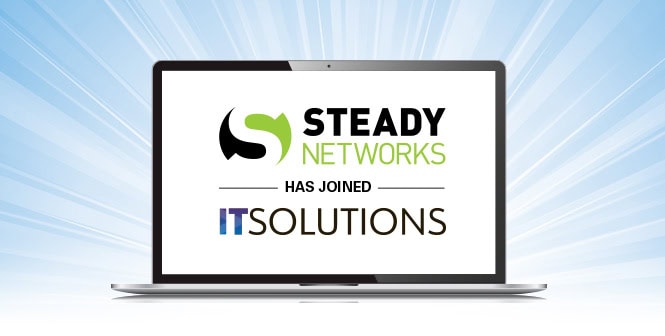Small and medium-sized businesses often outsource IT responsibilities to meet their IT needs.
Serving as a cost-effective way to fulfill an organization’s specific IT needs, managed and professional services are often customized to fulfill a specific set of support services – all without the need of having to budget an entire IT department.
While both managed services and professional services can help organizations overcome specific challenges and improve day-to-day running, there are significant differences between managed services vs professional services that are worth exploring.
To find out more about whether managed or professional services are right for you, our blog will cover the ins and outs regarding managed services vs professional services, so let’s dive in.
What are Managed IT Services?
Companies turn to managed service providers (MSPs) when they are outsourcing information technology responsibilities to be fulfilled by various IT experts.
Improve IT Effective While Lowering Costs With Steady Networks
|
When this occurs, a service level agreement (SLA) is often used to bind and clearly define the services offered, business goals, and applicable service conditions that are included, such as project-based IT tasks or as-needed break-fix services.
Types of services supported with managed services include:
| Common Types of Managed Services | |
| IT Security | Staying protected from evolving cyber threats means ensuring your organization’s security, infrastructure, and support levels are where they need to be.
Should your organization lack the responsiveness or expertise required, then your business will experience drop-offs in:
With managed services, your company can streamline IT support around-the-clock, accelerate IT issue resolutions, and implement stronger security measures such as:
|
| Data Backup | More than 80% of organizations use the cloud for data backup and storage. To ensure short and long-term business continuity, many companies leverage managed services to:
|
| Troubleshooting | Avoiding IT bottlenecks is essential for ensuring peak performance across your business. With managed services, businesses can expedite their IT issue resolutions with troubleshooting offered via:
|
| IT Management | Managed services provide organizations with the ability to delegate some of all of their IT management responsibilities.
As a result, business leaders can improve their business focus while ensuring specific IT needs and services are being met across the infrastructure. In short, when companies outsource their IT management with managed services, they improve the running, maintenance, and support of their business processes and technology. |
| Network Monitoring | Every minute of downtime costs organizations and average of $5,600.
With managed services, your business can ensure its network monitoring, infrastructure, and support are where it needs to be for maximum uptime. |
| Employee Onboarding | Onboarding is time-consuming, complex, and resource-intensive.
However, with managed services, every facet of onboarding is more manageable. From deploying new hardware or software, to creating new user logins and access controls, to structuring databases for onboarding training, managed services improve an organization’s onboarding processes business-wide. |
| Day-to-Day Maintenance | IT management presents daily challenges.
If your in-house teams aren’t prepared for the rigors that lie ahead, then your business will experience losses in:
Ensure your day-to-day IT processes, systems, and infrastructure is well-maintained with co or fully-managed services. |
| Unified Communications | Collaboration and connectivity are essential in modern business.
When issues with communication and network connectivity arise, it causes unnecessary confusion and impacts an organization in more ways than one. With managed services, an organization can unify its communication channels with support services covering:
|
What are Professional Services?
Professional services are often used by organizations seeking to aid their IT department with less routine and more complex services, such as:
- Cloud migrations
- IT strategy consulting
- Network design, creation, and deployment.
| Interested in learning more about outsourced IT services? Visit our blogs on: |
Unlike managed services whose services are standby and always ready to help, professional services are more on-demand and often accompanied by hourly rates.
| Types of Professional Services | |
| Consulting | Not every organization has a Chief Information Officer (CIO) spearheading its IT department. In such cases, a business may hire professional consulting services for help with:
|
| Cloud Migrations | Professional services can help organizations streamline their cloud migration with professional services covering public, private, on-premises, and hybrid migrations. |
| Advanced Troubleshooting | While most managed services are capable of troubleshooting simple to complex IT issues, sometimes the sophistication of an IT issue proves too challenging.
In such cases, professional services are often hired to come in and remediate the issue for you. |
| Hardware, Software, and OS Deployments | Professional services are often used by organizations to streamline the installation and adoption of new hardware, software, and OS deployments for a quicker ROI. |
Ensure Your IT Needs Are Met With Our Outsourced IT Services
Managed and professional services ensure that an organization’s IT needs are met at a rate that’s affordable to them.
Now that you’re more familiar with the differences between managed services vs professional services, it’s time to ask yourself which type of services your business needs the most. Regardless of which route you choose, rest assured knowing that with us in your corner, your business will benefit from:
- Our average IT resolution times of 24.6 minutes
- Customizable IT support services built around your needs
- Experiencing a 29.9% reduction in IT support tickets from year one to year two
- Having 100% of your IT service tickets handled daily within committed timeframes
If you’re still unsure about which services are right for you, consider contacting our technology consultants today to discover which suite of services best suits your needs.
